Blue gourami - Trichogaster trichopterus
Scientific name: Trichogaster trichopterus
Common name: Blue gourami
Family: Osphronemidae
Usual size in fish tanks: 10 - 13 cm (3.94 - 5.12 inch)
014
Recommended pH range: 6 - 8
Recommended water hardness: 4 - 18°N (71.43 - 321.43ppm)
0°C 32°F30°C 86°F
Recommended temperature range: 22 - 28 °C (71.6 - 82.4°F)
The way how these fish reproduce: Spawning
Where the species comes from: South Asia
Temperament to its own species: peaceful
Temperament toward other fish species: aggressive to smaller
Usual place in the tank: Top levels
Origin
The Blue Gourami (Trichogaster trichopterus) is native to South East Asia, found in slow-moving rivers, swamps, and ponds in countries like Thailand, Vietnam, and Indonesia. These areas provide the warm, calm waters with dense vegetation that suit the species. Blue Gouramis are now bred widely in captivity and have become popular aquarium fish worldwide.
Lifespan
With proper care and ideal water conditions, the Blue Gourami can live for 5 years or more. Consistent water quality and a balanced diet are essential for their well-being and longevity.
Short Description
The Blue Gourami is an eye-catching fish and an excellent choice for both beginner and experienced aquarists. This species is a color variant of the Three Spot Gourami, known for its beautiful blue coloration, which can intensify during breeding. As a member of the Labyrinth fish family, the Blue Gourami has a special organ that allows it to breathe atmospheric air, making it adaptable to low-oxygen environments.
The Blue Gourami is active and often seen swimming at all levels of the aquarium, occasionally rising to the surface for air. To protect their labyrinth organ, ensure the room temperature remains stable and doesn't drop too low. Juveniles are peaceful, but as they mature, they may become territorial and show aggression towards smaller tank mates. It’s best to house them with fish of similar size and temperament.
Feeding
The Blue Gourami is an omnivorous species that enjoys a varied diet. Offer a quality flake or pellet as their staple food, while supplementing their meals with live or frozen foods like brine shrimp, bloodworms, and white worms. They also benefit from vegetable matter like blanched spinach, lettuce, or chopped cucumber. Feed them small portions once or twice daily, and avoid overfeeding.
Sexing
Male and female Blue Gouramis are easy to distinguish. Males possess a longer, pointed dorsal fin, while females have a shorter, rounded dorsal fin. Males also tend to be more colorful, especially during breeding.
Breeding the Blue Gourami
Breeding Blue Gouramis is relatively straightforward. They are bubble nest builders. The male creates a nest at the water’s surface, often using floating plants. Once the nest is complete, the male will court the female, displaying his colors and enticing her to the nest.
During spawning, the male wraps himself around the female, and eggs are released into the nest. After spawning, it is crucial to remove the female from the tank, as the male will become aggressive and may harm her. However, if the tank is large enough, at least 90 liters (approximately 24 US gallons, 19.8 Imperial gallons), and provides numerous hiding spots, such as caves or dense plants, the female may not need to be removed. She can seek refuge from the male’s aggression.
The male will guard the eggs, which hatch in 2-3 days. Once the fry are free-swimming, it is advisable to remove the male as he may eat the fry. However, if the tank has sufficiently dense vegetation that offers ample cover, it may not be necessary to remove the male, as the fry will have places to hide. If the vegetation is not dense enough, you should also remove the female once the fry become free-swimming to prevent her from preying on them.
The fry should be fed on infusoria or newly hatched brine shrimp to ensure healthy growth.
Thanks
Special thanks to Jeff Catalina for providing the stunning photos of the Blue Gourami featured on this page.
The below-shown pictures were bought from jjphoto.dk.
The Yellow form
The Cosby form












 Akar
Akar  Whiteseam
Whiteseam 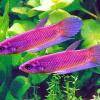 Giant
Giant  Betta
Betta  Slender
Slender 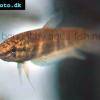 Betta
Betta 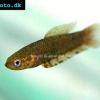 Brown’s
Brown’s  Snakehead
Snakehead  Wine
Wine  Edith’s
Edith’s  Blue
Blue  Betta
Betta 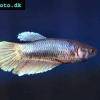 Peaceful
Peaceful  Kapaus
Kapaus  Eyespot
Eyespot  Spotted
Spotted  Forest
Forest  Schaller’s
Schaller’s  Siamese
Siamese  Chukai
Chukai 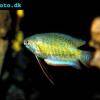 Banded
Banded  Dwarf
Dwarf  Frail
Frail  Paradise
Paradise 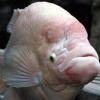 Giant
Giant  Giant
Giant  Licorice
Licorice  Chocolate
Chocolate  Honey
Honey  Thick
Thick  Pearl
Pearl  Moonlight
Moonlight  Snakeskin
Snakeskin